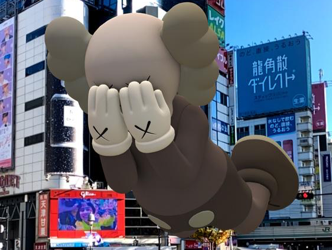The Jeff Bezos of his time
“He was a bit like the Jeff Bezos of his time. Samuel Josefowitz created a mail order company that sold records and then books. He went on to sell his business in order to dedicate his entire time to art and discovering artists.” The art historian and great-grandson of Camille Pissarro, Joachim Pissarro, knew the collector Samuel Josefowitz (1921-2015) very well.
Glutton for art
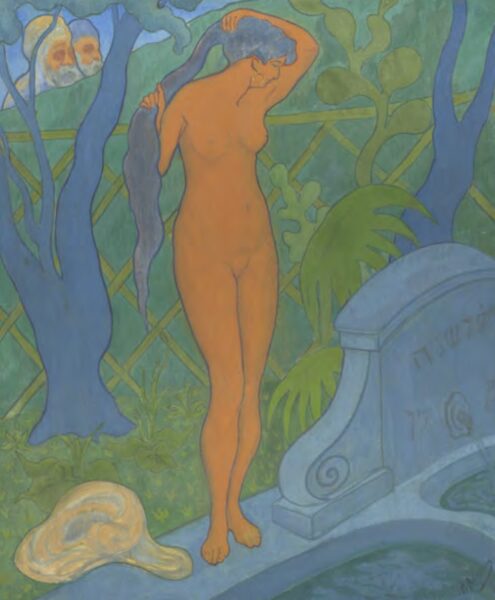
Paul-Elie Ranson
A series of sales will be dispersing the Josefowitz collections in London from 13 to 20 October and in Paris from 12 to 25 October, then again in London on 7 December 2023. The ensemble has a total estimate of 93 million euros and is unusual for at least two reasons. Firstly Samuel Josefowitz was a glutton for art, “a collector of collections” as Joachim Pissarro explains, and the works presented, around 800 lots, span a period of nearly 3000 years, amassed over six decades.
They range from an Assyrian bas-relief (around 883 BC) (estimate: 2.5 million euros) to Western paintings from the 1920s, along with a substantial collection of Rembrandt etchings. These auctions are being held following the recent death of Samuel Josefowitz’s widow.
Classified as masterpieces
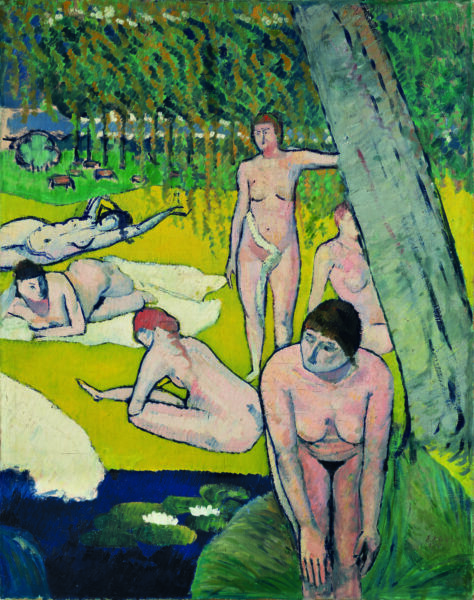
Emile Bernard
The lots classified by the auction house as “masterpieces” are the subject of a separate catalogue, due to be presented on 13 October in London. The art fan, who had extensive experience in the field, kept in his possession some pieces that are unusual for today’s global museums.
Newfields Museum in Indianapolis
In 1997 he jointly sold and offered an ensemble of 101 post-impressionist paintings to the Newfields Museum in Indianapolis, including the famous painting by Paul Gauguin (1848-1903) “Nuit de Noël”, depicting a snow-covered pastoral scene in shades of blue. He also owned the extraordinary portrait of art critic Félix Fénéon, painted in whirls of colour, by Paul Signac, which is now in Moma in New York. On a more modest note, he gave his archives from this school of painting, which emerged in the little village made famous by the miraculous arrival of Gauguin, to the Musée de Pont-Aven in Brittany. This was his real passion.
Josefowitz’s taste
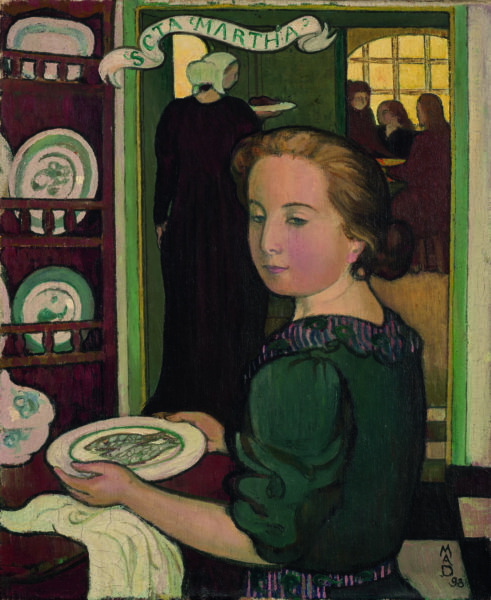
Maurice Denis
There were two Parisian exhibitions staged in the 1950s that opened his eyes to the movement, as revealed in a book on collectors published in 2007 and written by James Stourton: “I was struck by the honesty of the paintings which were not looking for easy effects. I also saw parallels with the literature of the time, for instance the novels of Balzac” (1). When Josefowitz died, a relatively modest sale was held at Christie’s in Paris on 31 March 2016, with a more discreet title: “Au temps de Gauguin: un ensemble d’oeuvres d’une collection privée européenne” (In the times of Gauguin: an ensemble of works from a European private collection). It brought in 2.7 million euros for 35 lots. It was particularly characteristic of Josefowitz’s taste.
Lesser-known masters
He liked – and this was where his other singularity lay – high-quality artworks by lesser-known masters, artists who are only valued by seasoned art lovers. Although the catalogue for the Parisian sales is not yet online at the time of writing, we can assume that it will contain many gems, financially accessible ones too, by these Pont Aven painters who were for a time inspired to genius by emulating Paul Gauguin.
Joachim Pissarro
An online sale from 12 to 15 October is entirely dedicated to these drawings and etchings. “He bought in a very exhaustive way,” explains Joachim Pissarro. “Walking around his house near Lausanne, by the lake, was like taking part in a history of art seminar. What he liked was to discover and enable the discovery of major works by little-known artists. With the Pont Aven school but also with painters such as Vallotton or Caillebotte, he was in the right place at the right time. He was able to seize opportunities at a time when the market for these artists didn’t exist. In some ways he himself created a market.”
Anika Guntrum
Anika Guntrum, head of modern art at Christie’s, highlights the involvement of the art lover who “didn’t hesitate to get his pilot’s license to fly out to Pont Aven and get in touch with the heirs of local painters.”
Paul Gauguin
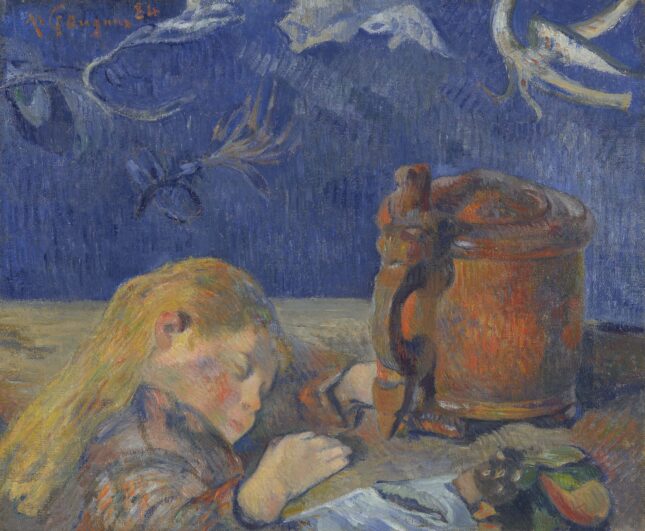
Paul Gauguin
As the summit of the Josefowitz collection James Stourton mentions eight Gauguin paintings. The sale on 13 October in London contains an etching and, in pride of place, a painting by Gauguin. The latter from 1884 depicts the painter’s son, Clovis (estimate: 3.6 million euros). The upper half of the canvas has a radical composition and is filled with a hard blue, while the lower part shows the young child dozing at a table. Until now it has been on loan to the Ontario Museum in Ottawa.
Gustave Caillebotte

Gustave Caillebotte
The sale also features five paintings by Gustave Caillebotte (1848-1894). The impressionist, who was himself a collector of impressionists, has recently been the subject of a certain revaluation. This son of one of the great fortunes of the Second Empire has long been seen as a dilettante in painting. In France, Caillebotte’s oeuvre was for a long time reduced to his grandiose and unique painting of men working, “Les raboteurs de parquet” from 1877, which is now at the Musée d’Orsay. But in 2021 a painting by the artist depicting a pensive male figure, seen from behind, standing by his window overlooking the Parisian streets, sold in New York for the record price of 46 million euros. It was the Getty Museum in Los Angeles that made the acquisition.
Partie de bateau
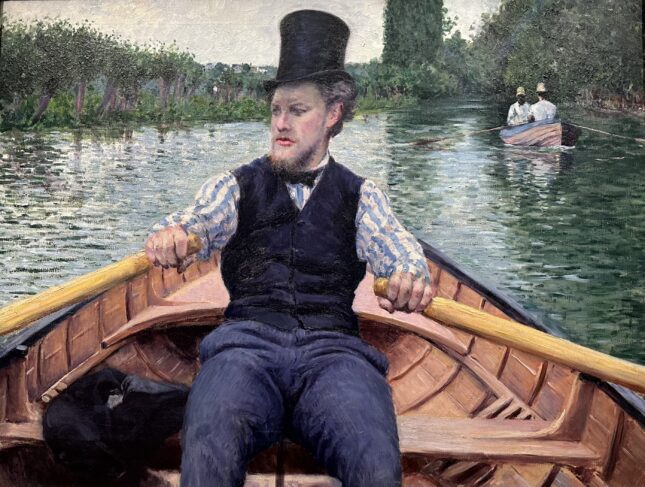
Gustave Caillebotte
At the same time, some of the painter’s descendants put up for sale “Partie de bateau” from 1879, a painting classified as a national treasure and therefore prohibited from leaving France. It was bought for 42 million euros by LVMH and offered to the Musée d’Orsay (2). The institution has scheduled a large-scale Caillebotte exhibition for 2024.
Japanese inspiration
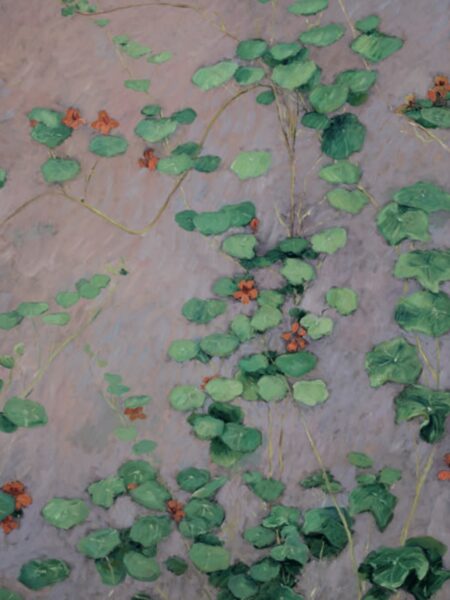
Gustave Caillebotte
The Caillebotte canvases in the Josefowitz collection are estimated at 470,000 euros for a portrait of a dog painted around 1886 up to 1.1 million for the depiction of the artist’s cousin, Eugène Daufresne. It was painted in 1878 in shades of blue, red and purple, which give an intimate atmosphere to this image of a man reading. More radically, in around 1892 Caillebotte made a painting of Japanese inspiration, composed uniquely of branches covered in red flowers, trailing nasturtiums (estimate: 1.1 million euros).
Kees Van Dongen
In his quest for “niche” artworks corresponding to artists who were underrated at the time, there are also three of the most Parisian canvases by Dutch painter Kees Van Dongen (1877-1968). Here his masterpiece is “La quietude” from 1918, a painting made up of curves in blue, orange, grey and brown depicting a reclining woman, over whose body another androgynous figure lies languorously (estimate: 3.6 million euros). This canvas has not been seen on the market since 1968. In the 1920s she presided over the bed of fashion designer Paul Poiret. Van Dongen, who became very society-oriented in the second part of his career, produced to excess. But for a few years now the market has been appreciating his more aesthetically streamlined paintings. The orange portrait of a “Jeune arabe” from 1910 sold in 2009 for the record price of 9.3 million euros.
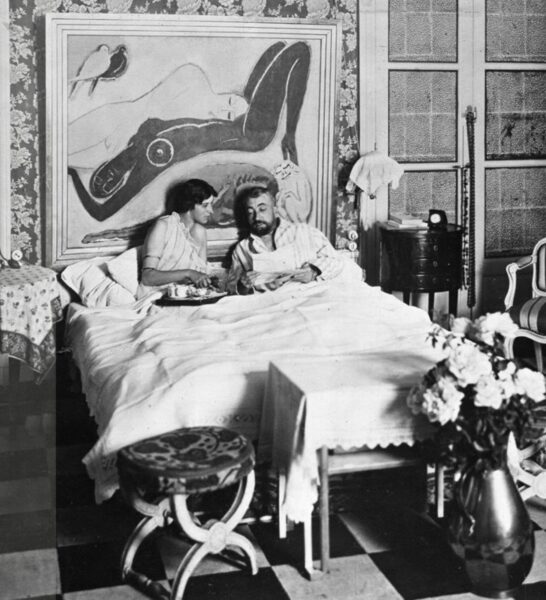
Paul Poiret and his wife
Félix Vallotton
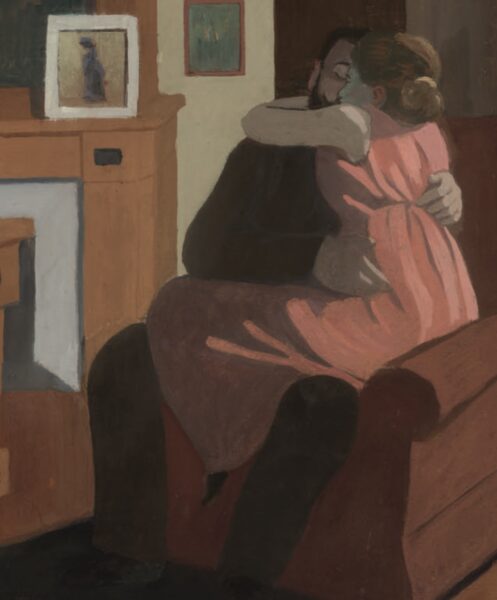
Felix Vallotton ( detail)
Lastly, Samuel Josefowitz particularly liked a Swiss artist, both impudent and unexpected, Félix Vallotton (1865-1925), three of whose paintings are due to be presented on 13 October. The most characteristic is titled “Cinq heures”. It depicts a couple embracing within an interior with subdued colours. Most likely inspired by a news story, it references an adulterous situation at an office. As early as 1884, the Swiss artist who once belonged to the avant-garde group Les Nabis stood out by making a portrait, on a large scale, of majestic female buttocks. But the record price for the artist was obtained for a much more modest work: a market scene that sold for 3.2 million euros in 2016. Vallotton, in spite of his highly modern graphic style, still suffers from a lack of recognition. Art history and the art market must soon redress this.
(1) Great collectors of our time. James Stourton. Scala.
(2) The purchase of a national treasure accepted by an institution enables in compensation a tax deduction of 90% of the payment for the work.
Donating=Supporting

Support independent news on art.
Your contribution : Make a monthly commitment to support JB Reports or a one off contribution as and when you feel like it. Choose the option that suits you best.
Need to cancel a recurring donation? Please go here.
The donation is considered to be a subscription for a fee set by the donor and for a duration also set by the donor.


